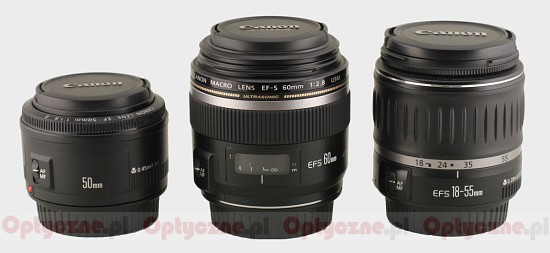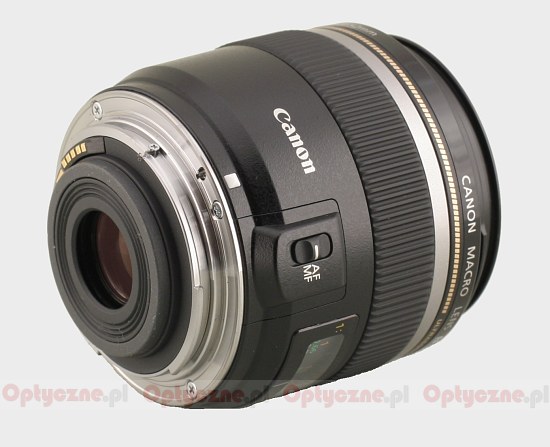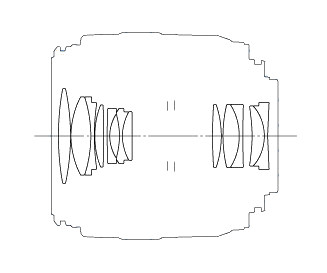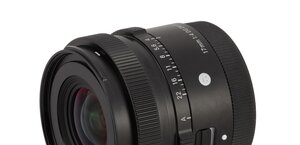Canon EF-S 60 mm f/2.8 Macro USM
3. Build quality
 |
A closed construction is an obvious advantage. Nothing protrudes, nothing sucks dust inside the instrument, we have no problems with filters, which by definition, don’t rotate.
Please Support UsIf you enjoy our reviews and articles, and you want us to continue our work please, support our website by donating through PayPal. The funds are going to be used for paying our editorial team, renting servers, and equipping our testing studio; only that way we will be able to continue providing you interesting content for free. |
- - - - - - - - - - - - - - - - - - - - - - - - - - - - - - - - - - - - - - - - - - - - - - - -
As far as the external appearance is concerned, Canon has no surprises in store for us. A little front lens is surrounded by a filter thread of 52 mm diameter. Below we find a place to mount a lens hood (in Canon’s case, obviously, you need to buy it separately), a convenient and working smoothly manual focusing ring and a legible distance scale extending from 20 cm to infinity and place below a glass plate. On its left side, there’s an AF/MF switch for changing the mode of the focusing mechanism. The lens ends with a metal bayonet and a characteristic of EF-S lenses rubber ring which makes it impossible to mount them on full-frame cameras.
 |
As far the minimum focusing distance is concerned, the producer states the value of 20 cm. It’s worth to mention, though, that this quantity tells about the distance from the main plane, and not from the front lens. Therefore, you need to realize that when taking pictures at the lowest end of the scale, we have the object around 9 centimeters from the front lens. For many bugs it’s a too claustrophobic situation to accept it meekly. My son’s coins and toy soldiers were much more patient.
As far as the inner construction is concerned, we’re dealing with 12 elements set in 8 groups here. On one hand, it’s a similar to Nikon’s situation, as it has 12 elements in 9 groups. On the other, Nikon boast about using one lens of low dispersion glass and two aspherical. Canon doesn’t mention any special elements. They brag, however, about using unleaded glass. Inside the lens we find a circular diaphragm of seven blades that can be closed to f/32.







